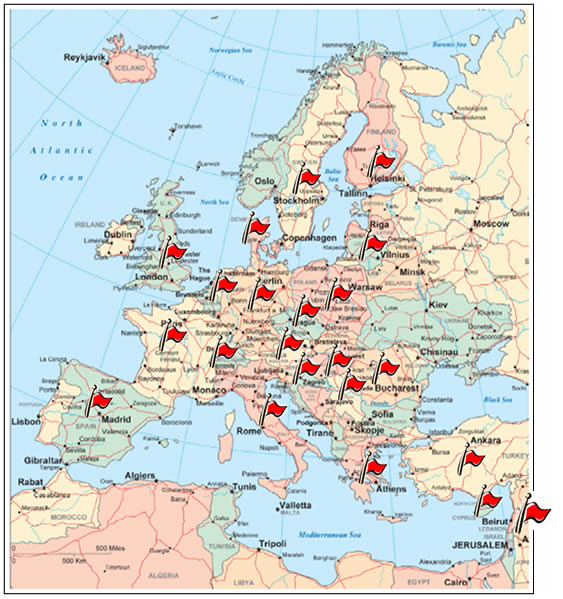INFORMACJE
PAWEŁ B. WIŚNIOWSKI - Universite Paris-Sud (FRA) - IAEA Fellowship 16.04.2008 (wersja angielska) International Atomic Energy Agency Fellowship (2008 ), Laboratoire de Chimie Physique, ELYSE, UMR CNRS/UPS 8000, Universite Paris-Sud, 91405 Orsay, France. ELYSE is a world-class picosecond pulse radiolysis research centre, the only one having this ultra-short time resolution in Europe. The facility comprises of a laser-triggered 4 –9 MeV electron accelerator delivering 5 ps pulses at low charge (< 2nC). The original conception of this accelerator is based on a high synchronization between femtosecond laser extracting the photoelectrons from a Cs2Te semiconductor photocathode, and a hyperfrequence wave accelerating the electron bunches in two RF cavities to a final energy 9 MeV. The detection system consists of a 5 ps time-resolution multichannel streak-camera (emission and absorption, time range from 250 ps to 1 ms, 250 – 850 nm), 3 GHz Digital Oscilloscope and spectrographs. Earlier, I had no experience at all in performing pulse radiolysis experiments in pico-second time resolution. The accelerator LAE 10 coupled with the pulse radiolysis set-up and operating in my maternal institution (INCT) is dedicated to pulse radiolysis experiments in nanosecond time-domain, i.e. 3 orders of magnitude longer, in comparison to the ELYSE facility. Thus, the ELYSE facility has enormous advantage over nanosecond facilities in observation of ultra fast processes, very often connected with primary steps of radiolysis (charge transfer reactions, solvation of electrons). Therefore, the training, I have received in the ELYSE center, was very important as far as my experience in time-resolved technique is concerned. The knowledge that concerns a new research opportunities and frontiers offered by the ELYSE is the most important benefit of my short visit. On the top of that, I was directly involved in picosecond pulse radiolysis experiments in which re-evalutation of the initial yield of the hydrated electrons in picosecond time domain was attempted. Under guidance of two local experts dr. J.-L. Marignier and H. Monard I was introduced to the methodology of data processing. Application of computational methods in data processing was very rewarding for me since some of the procedures can be applied in the nanosecond pulse radiolysis setup in the INCT. During my visit I took the opportunity to visit other research groups and facilities in the Laboratoire de Chimie-Physique, including Professor’s Ch. Houeé-Levin group. I would like to express my special thanks to Director of the Laboratory prof. M. Mostafavi for permission and organization off my visit and to my two supervisors dr. J.-L. Marignier and H. Monard for their excellent and very sophisticated guidance during the whole period of my visit in France. strona główna autora.. |



